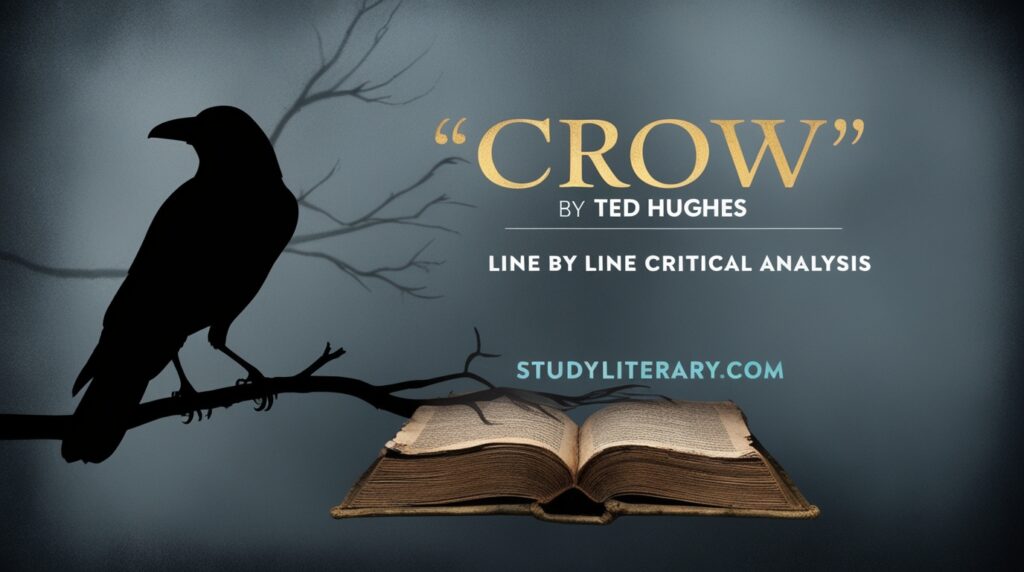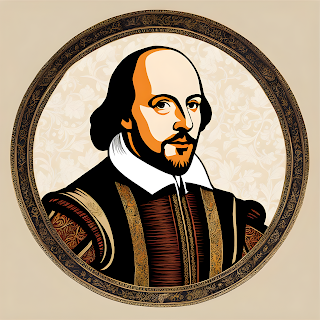
Crow by Ted Hughes line by line Critical Analysis
Line 1:
“When Crow was white he decided the sun was too white.”
The poem begins with a reference to the Crow being “white.” This suggests that Crow was once pure, innocent, or untainted. However, Crow perceives the sun as “too white,” symbolizing an extreme purity or perfection that seems blinding. Crow’s dissatisfaction with this intense whiteness sets the stage for the conflict in the poem.
Line 2:
“He decided it glared much too whitely.”
The repetition of “white” emphasizes Crow’s discomfort with this brightness. The “glare” suggests that this overwhelming purity is harsh or unbearable, further highlighting Crow’s struggle with an unattainable ideal or perfection.
Line 3:
“He decided to attack it and defeat it.”
Crow’s decision to “attack” the sun symbolizes a rebellion against the idealized purity or perfection represented by the sun. The idea of defeating the sun suggests Crow’s desire to bring it down to a more manageable or relatable state.
Line 4:
“He got his strength up flush and in full glitter.”
This line portrays Crow preparing for battle. The words “strength,” “flush,” and “full glitter” convey an image of Crow gathering all his power, emphasizing his determination and readiness for this monumental challenge.
Line 5:
“He clawed and fluffed his rage up.”
Here, Crow is depicted as intensifying his anger and aggression. The words “clawed” and “fluffed” evoke the image of a bird bristling and sharpening its weapons. This preparation symbolizes the raw, violent energy that Crow embodies.
Line 6:
“He aimed his beak direct at the sun’s centre.”
This line represents Crow’s focused aggression. By aiming “direct at the sun’s centre,” Crow is targeting the very essence of the perfection he seeks to challenge. The “centre” represents the core of the ideal that Crow finds intolerable.
Line 7:
“He laughed himself to the centre of himself”
Crow’s laughter here is dark and defiant. The phrase “to the centre of himself” suggests that this act of rebellion is central to Crow’s identity. It indicates a merging of Crow’s being with his purpose—his entire existence becomes this act of resistance.
Line 8:
“And attacked.”
This line is abrupt and powerful, reflecting the suddenness and ferocity of Crow’s attack. The simplicity of the word “attacked” conveys the raw, unfiltered nature of his aggression.
Line 9:
“At his battle cry trees grew suddenly old,”
Crow’s battle cry has a profound, almost supernatural effect on the world. The phrase “trees grew suddenly old” suggests a sudden withering or decay, symbolizing the destructive power of Crow’s challenge to the natural order.
Line 10:
“Shadows flattened.”
The flattening of shadows could symbolize the suppression or elimination of depth, nuance, or complexity. In Crow’s battle against the blinding purity of the sun, even shadows, which usually represent contrast or depth, lose their substance.
Line 11:
“But the sun brightened—”
Despite Crow’s attack, the sun not only withstands it but grows even brighter. This could symbolize the persistence or invincibility of the ideal or purity that Crow sought to destroy. The sun’s resilience emphasizes Crow’s failure to diminish its power.
Line 12:
“It brightened, and Crow returned charred black.”
The repeated “brightened” reinforces the idea that Crow’s rebellion was futile. Crow’s return “charred black” indicates that he has been burned or transformed by his own defiance. The whiteness of the sun has now turned Crow entirely black, symbolizing a total loss of innocence or purity.
Line 13:
“He opened his mouth but what came out was charred black.”
This line suggests that even Crow’s voice is now tainted by his experience. The “charred black” represents a darkness that has consumed Crow, indicating that his rebellion has left him fundamentally changed.
Line 14:
‘”Up there,” he managed,’
Crow attempts to speak, indicating that he has something important to say. However, the struggle implied in “he managed” suggests that the experience has taken a toll on him, leaving him weakened or damaged.
Line 15:
‘”Where white is black and black is white, I won.”‘
Crow claims victory in a paradoxical statement. “Where white is black and black is white” suggests a realm where opposites are inverted. Crow’s assertion of victory might reflect a twisted perception—his success lies in transforming purity into corruption and vice versa. However, this “victory” is ambiguous, as it leaves Crow charred and possibly deluded.
Overall Analysis:
Ted Hughes’ poem explores themes of rebellion, identity, and the consequences of challenging the natural order or ideals. Crow, who starts as white (a symbol of purity), attempts to overthrow the sun (a symbol of blinding perfection). The battle ends with Crow becoming charred black, reflecting the destructive consequences of his defiance.
The poem also delves into the idea of transformation. Crow’s journey from white to black signifies a loss of innocence and an embrace of a darker, more chaotic existence. The final line suggests that Crow’s perception of victory is rooted in paradox and ambiguity, raising questions about whether his battle was truly successful or merely destructive.
Ted Hughes uses vivid imagery and strong, simple language to convey complex ideas about power, rebellion, and the nature of transformation.

